Bending Borders
When a political decision split the village of Szelmenc between Europe and the Soviet Union, people on both sides of the wall devised ingenious ways of staying in touch with friends and family members.
At the beginning of 1945 Slemence was a tiny, largely Hungarian-speaking village in the Subcarpathia region of Czechoslovakia. Originally part of Hungary, it had been ceded to Czechoslovakia, then to Hungary, then back to Czechoslovakia (the present-day Czech Republic and Slovakia). And once again in faraway Moscow, in the aftermath of the Second World War, politicians with pencils were redrawing the borders between Czechoslovakia and the Soviet Union, and the new border cut straight through Slemence. At first it ran through the village cemetery. Then it was redrawn through a street on what is today the Ukrainian side. When it was redrawn for the third and final time, locals say, a young girl engaged to be married was on the west side of the village showing her wedding dress to her parents. When she went to go home she found herself separated from her fiancé by a pencil stroke, unable to return without a visa.
Borders are not fixed geographic or political boundaries. They have been designed by man and can be changed at any time. In the case of the Slovak and Ukrainian villages of Veľké Slemence and Mali Selmentsi, the border has changed multiple times in the past 80 years, and its oldest residents have lived in four different countries without ever leaving their homes.
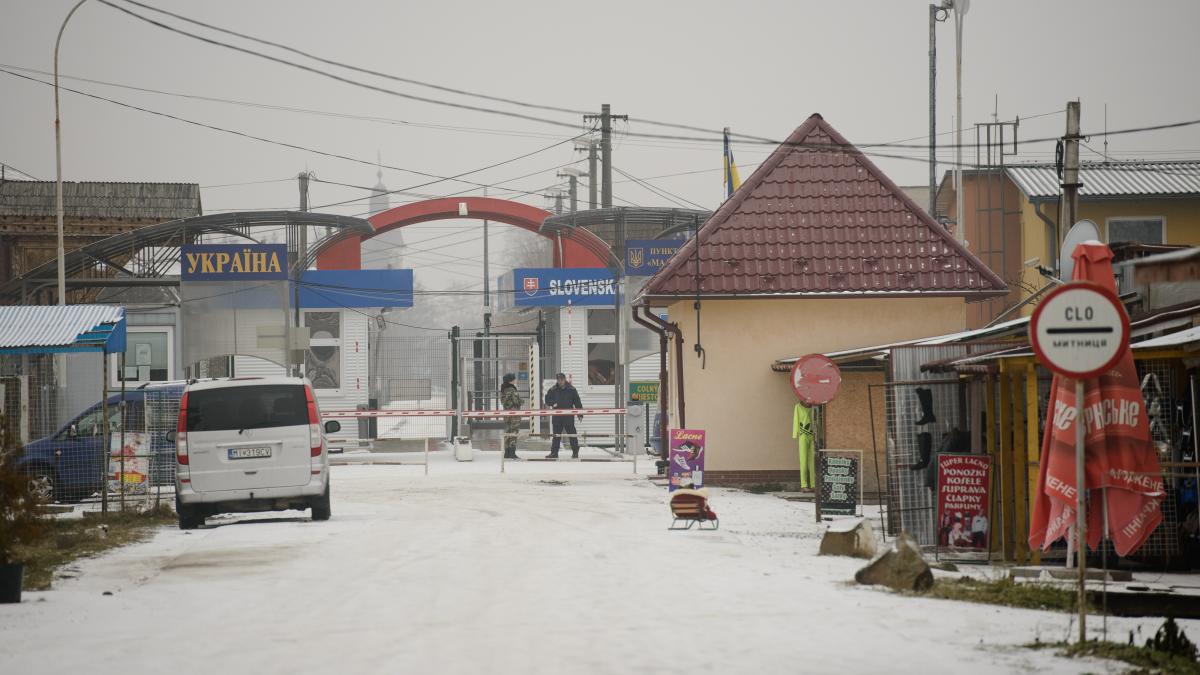
Historically, both Slovakia and Ukraine belonged to the same larger states, and family, business and historical ties naturally spanned the border between them. But when Czechoslovakia ceded the Subcarpathian Rus to the Soviet Union in 1946, these ties were disrupted by the new path of the strictly controlled Soviet–Czechoslovak border. Now that Slovakia is part of the European Union’s Schengen Area, the border is even more tightly controlled. (Photo: Tomáš Halász)
Whether or not that legend is true, it is certain that the new 6 m (20 ft) wall that separated Veľké Slemence (Greater Slemence), Slovakia on the west from Mali Selmentsi (Lesser Selmentsi), Ukraine on the east also separated people from their friends, relatives, fields and workplaces. Families, however, are not as easy to divide with the stroke of a pencil, and people on both sides of the line found ways to stay in contact, shifting the border, as it were, to suit their own needs.
You seem to enjoy a good story
Sign up to our infrequent mailing to get more stories directly to your mailbox.Jozef from the Slovak side remembers: ‘We didn’t have walkie-talkies or mobile phones in those days, so we used to go up to the wall and yell messages to each other.’ His neighbour Eva agrees. ‘If someone went up to the wall and wanted to talk with someone on the other side, they’d be reported and taken to jail. But when the soldiers left, people could yell to each other. And when we couldn’t speak there, we sang songs,’ she adds. ‘Most often when somebody died, but also when there was going to be a wedding.’ Judita from the Ukranian side tells a similar story. ‘We couldn’t go up to the wall. The police would have taken us away to the station. They took my son once. He was there with some friends on his motorcycle, and the police took them away.’
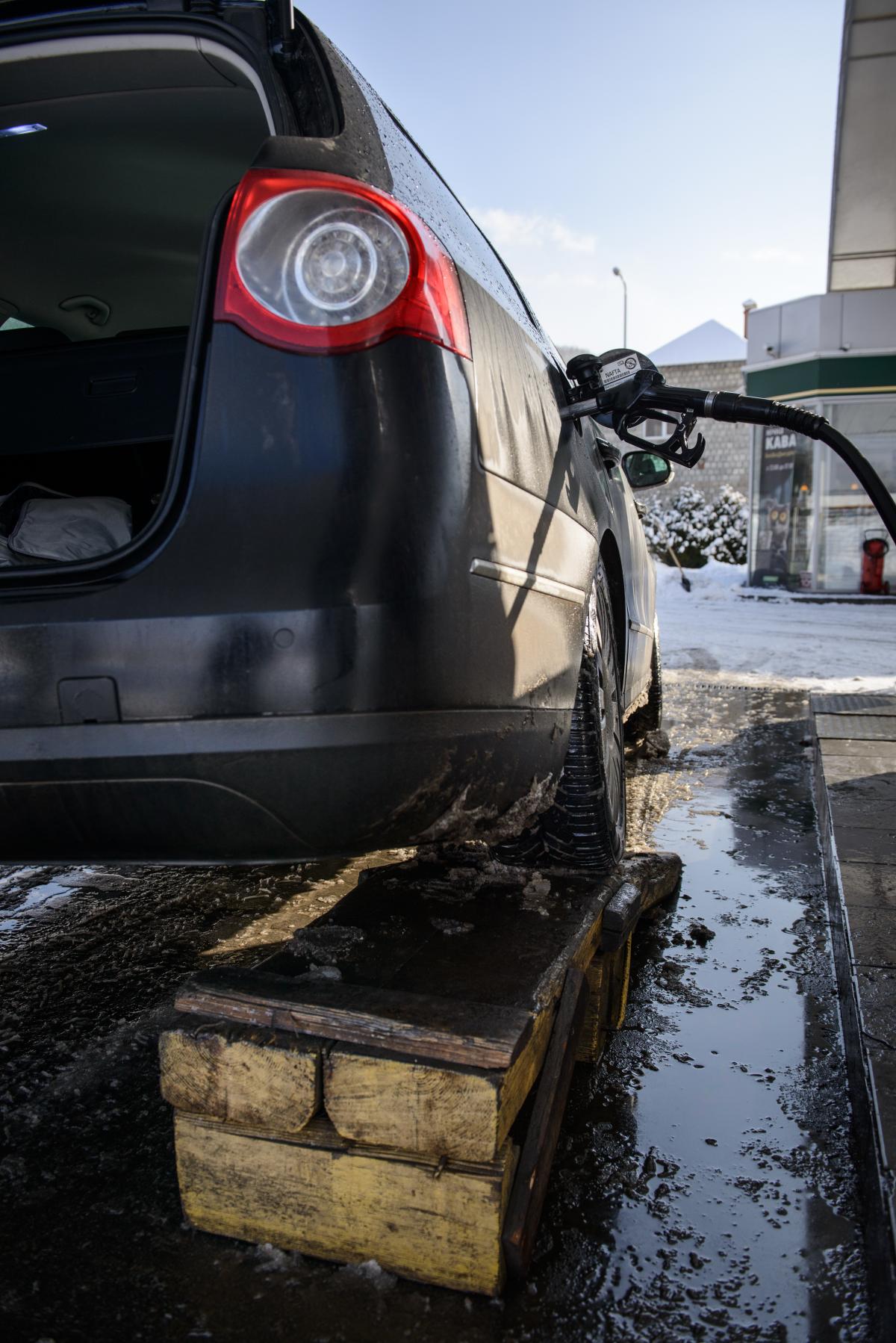
Petrol is nearly twice as expensive in Slovakia as in Ukraine, making Ukrainian prices attractive. Less attractive are the lines at the border, which are long in spite of the fact that Slovaks can fill up only once a week without paying import taxes. Drivers come up with ingenious ways to make the most of each trip, including tilting the car to get every last drop into the tank. (Photo: Tomáš Halász)
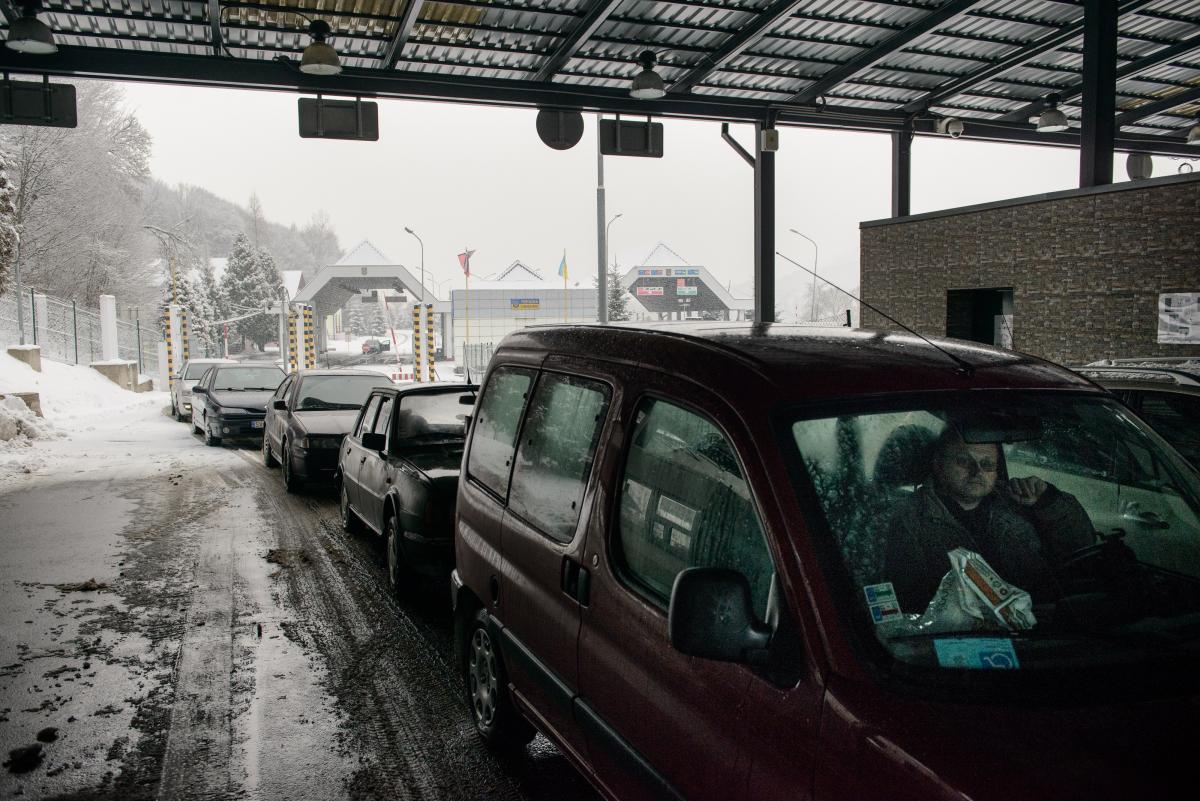
Beyond Slemence the 100 km (62 mi) border runs through wooded and mountainous areas where building a wall was impractical and maintaining a constant patrol was more difficult. ‘People there came up with a lot of things’, says Jozef. ‘For example, they would write a note and tuck it under a chicken’s wing. The chicken would cross the border and return afterwards.’ Dogs and cats also crossed the border on a regular basis, sometimes returning and sometimes not.
The oldest residents of the village Veľké Slemence have lived in four different countries without ever leaving their homes.
Animals, however, were not the only ones who managed to pass into the Soviet Union and back. ‘When they transported bales of hay across the border, the guards had a 2 m (6 ft) pole with a sharp, pointed end,’ says Jozef. ‘They would poke through the bales to see if there were people inside trying to visit their relatives. And young people used to cross over illegally on holidays, or even for parties.’ Eva recalls her own experiences. ‘The other girls and I used to go up and shout to the soldiers in Russian. They were all Russians, and we learned Russian in school,’ she says. ‘They wanted cigarettes, so we used to take them cigarettes every Sunday. They would do anything for beer and cigarettes. We used to go to parties on the other side, and the soldiers would let us pass. Illegally. If anyone had found out, they’d have been in big trouble, but we weren’t afraid because the father of one of the girls was a policeman.’
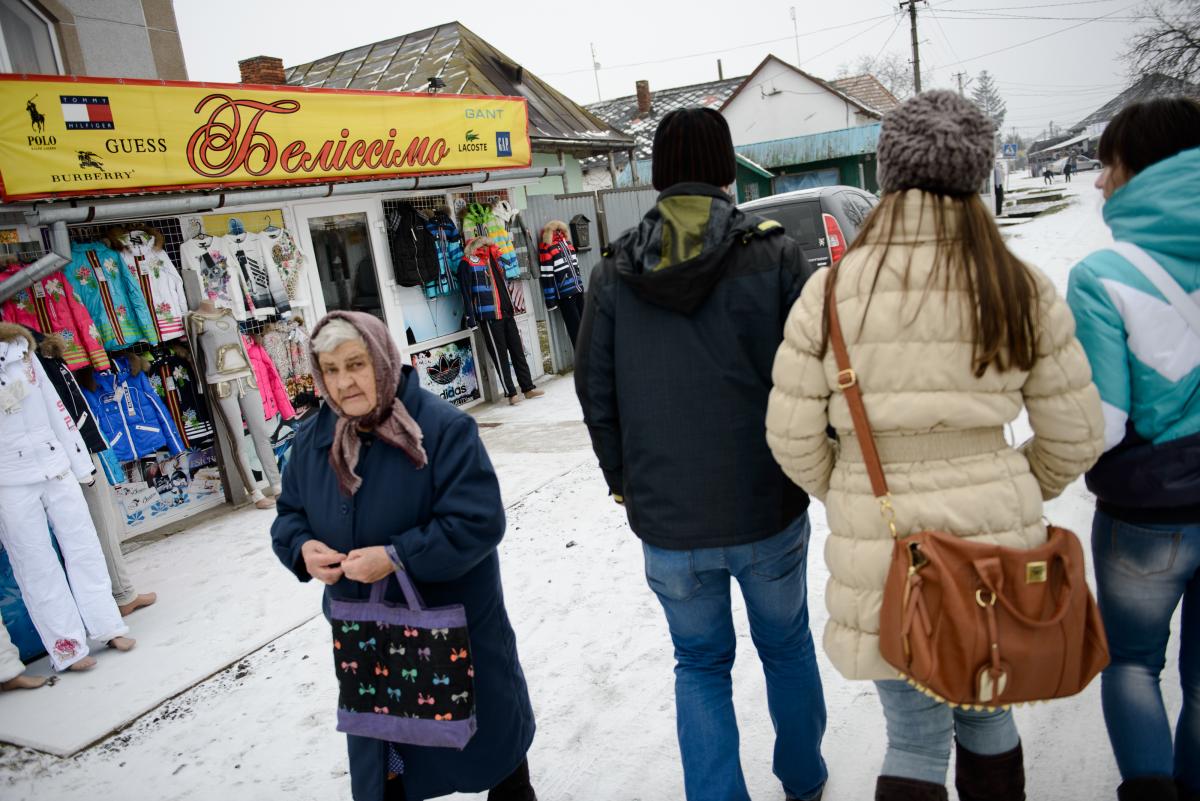
The pedestrian border crossing between Veľké Slemence (Slovakia) and Mali Selmentsi (Ukraine). The traffic consists almost exclusively of Slovaks in search of cheap cigarettes, alcohol and clothes. Unlike Slovaks, Ukrainians cannot cross the border without going through the costly and timeconsuming process of obtaining a visa. (Photo: Tomáš Halász)
A breakthrough came in 2005 when visa requirements were relaxed (a state that lasted until 2007 when Slovakia joined the EU). In Slemence, pedestrians and cyclists could finally cross over to visit friends and family, and in nearby Ubľa, Slovak motorists could cross over to Malyi Bereznyi to buy cheap cigarettes, alcohol and petrol. ‘I said I wasn’t going to come here,’ says Peter, a 27-year-old Slovak filling his tank just across the border, ‘but petrol is really expensive on our side. I work in Bratislava, and I save 20 or 30 euros (US$23–34) by filling up here.’ Demand was so high that cars waited in line at the border as long as 11 hours, and limits had to be imposed: four tanks of petrol per month, and one litre of alcohol and two packs of cigarettes per person. Not all border traffic is legal, however, and the ever-widening economic disparity between the wealth of the EU and the relative poverty of the former Soviet bloc make black-market activity attractive to the lords of organised crime on both sides, as well as to those desperate to earn a living wage at any cost. The smugglers of today are just as ingenious as the villagers of days past at bypassing border controls, so the police and border guards strive to be even more ingenious, locked in a game of technical cat-and-mouse with criminals who stand to reap enormous profits by moving goods and refugees, especially now that the border between Ukraine and Slovakia is also the border between Ukraine and the European Union’s Schengen Area.
Slovakia, unlike Ukraine, joined the Schengen Area in 2007, and the eastern EU border is now guarded like a fortress, separating the East from the prospect of the wealth of the West. Like any well-guarded object of desire, this border attracts smugglers and human traffickers.
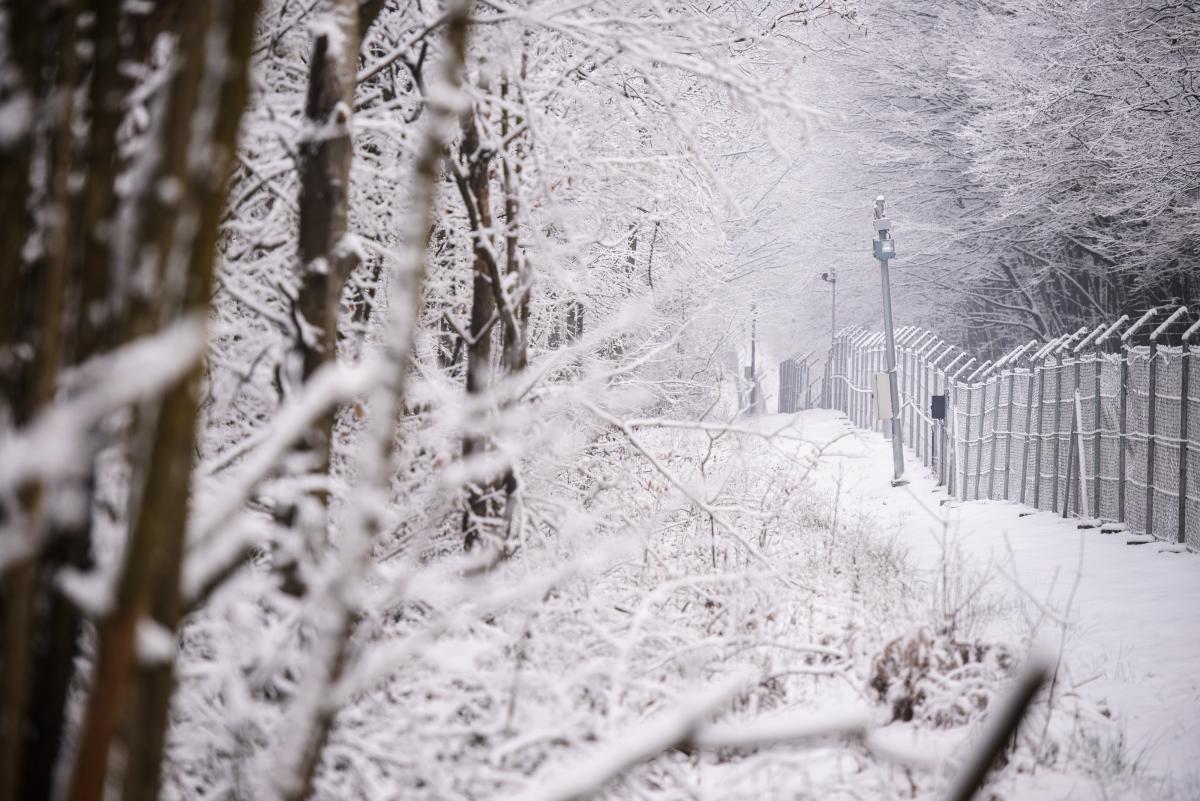
The Slovak–Ukrainian border is just 97 km (60 mi) long, but now that Slovakia is an EU member state, border security is more than just a national concern, so the border control uses hightech gear including georadar units and thermal cameras to prevent intrusion, while smugglers and human traffickers continuously seek exploitable holes in the system. (Photo: Tomáš Halász)
In the year 2013 alone, police and customs officials seized 4,355,500 black-market cigarettes with a total value of over €540,000 (US$613,000) just in this area. In many cases the goods were transported using common, low-tech methods, hidden in cars (inside doors, air filters or spare tyres), in trains, or under the clothing of smugglers walking through the woods.‘ They even used the rivers,’ says Jozef. ‘They flow our direction from Ukraine, so they used to put the cigarettes in plastic bags so they wouldn’t get wet, and someone was waiting for the packages on our side.’ Those arrangements were probably made with higher-tech help from the mobile phones that didn’t exist in Jozef’s youth: the ready availability of cheap SIM cards that can be used for a day or an hour and then thrown away keeps the smugglers’ calls virtually immune from police monitoring.
The police, determined to stay a step ahead, follow the latest developments in security technology, adapting techniques from around the globe to the unique conditions of this border territory. The 900 police officers, 350 customs officials and 80 dogs who patrol the territory in all-terrain vehicles, scooters, three-wheelers, special belt vehicles and snowmobiles are complemented by a team that monitors the area remotely using a network of high-tech sensors. This system, originally developed to protect oil and gas pipelines, utilises highly sensitive pressure detectors, motion detectors and microphones to identify any areas where unusual activity is taking place. The remote team can then monitor that area using the chain of CCTV cameras that provides both visible-light and infrared surveillance of the entire length of the border.
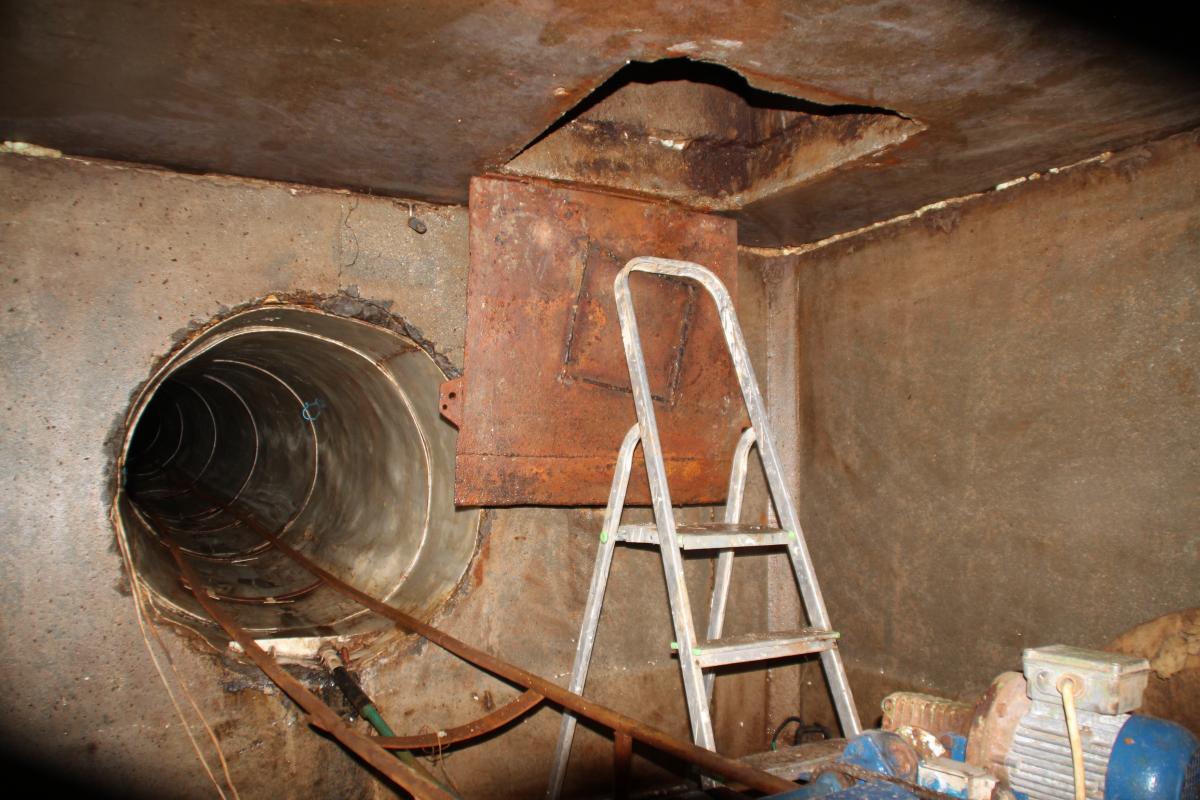
Six metres (20 ft) underground, a 700 m (2,290 ft) secret tunnel was dug under the Slovak–Ukrainian border to smuggle goods and possibly also people. The sophisticated tunnel was built using mining techniques and had a train consisting of 16 wagons and a battery-powered engine. (Photo: Archive of Border Police)
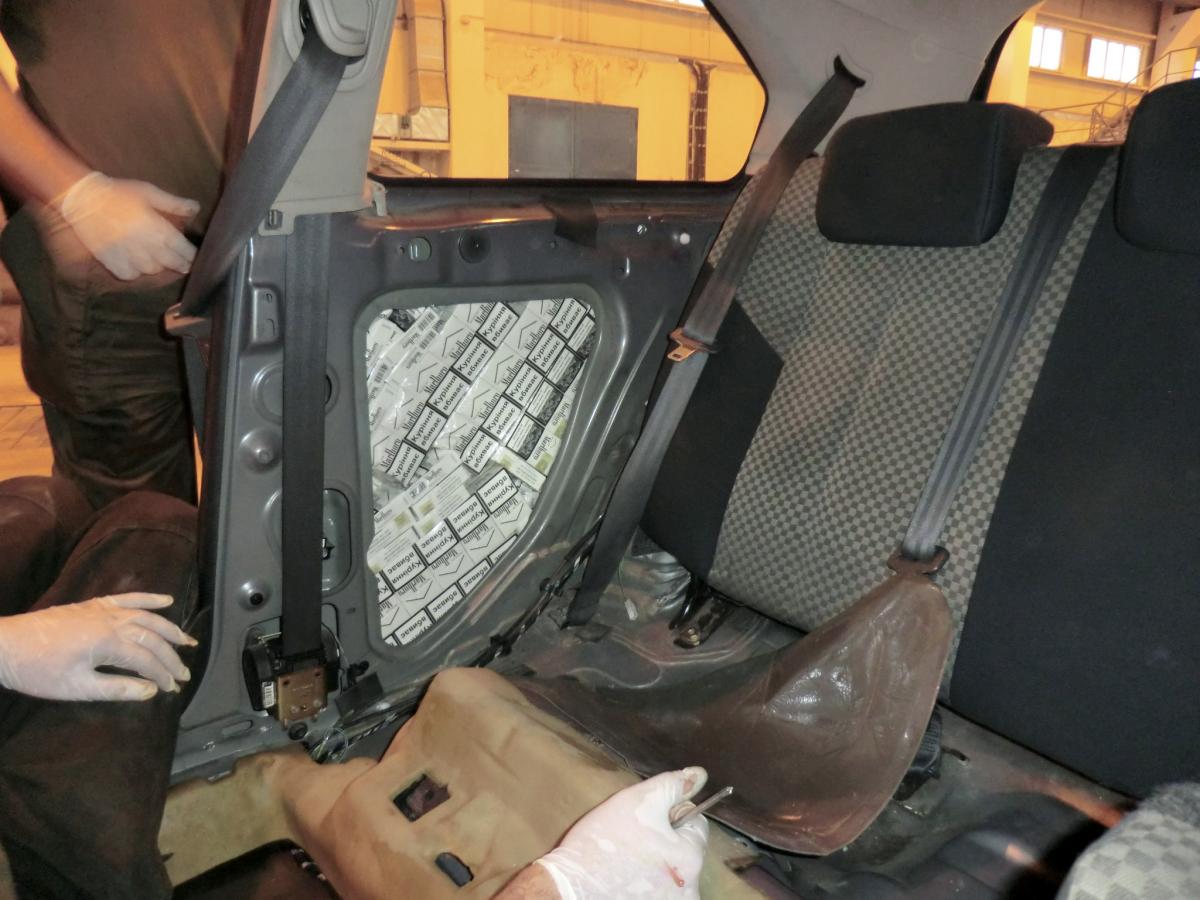
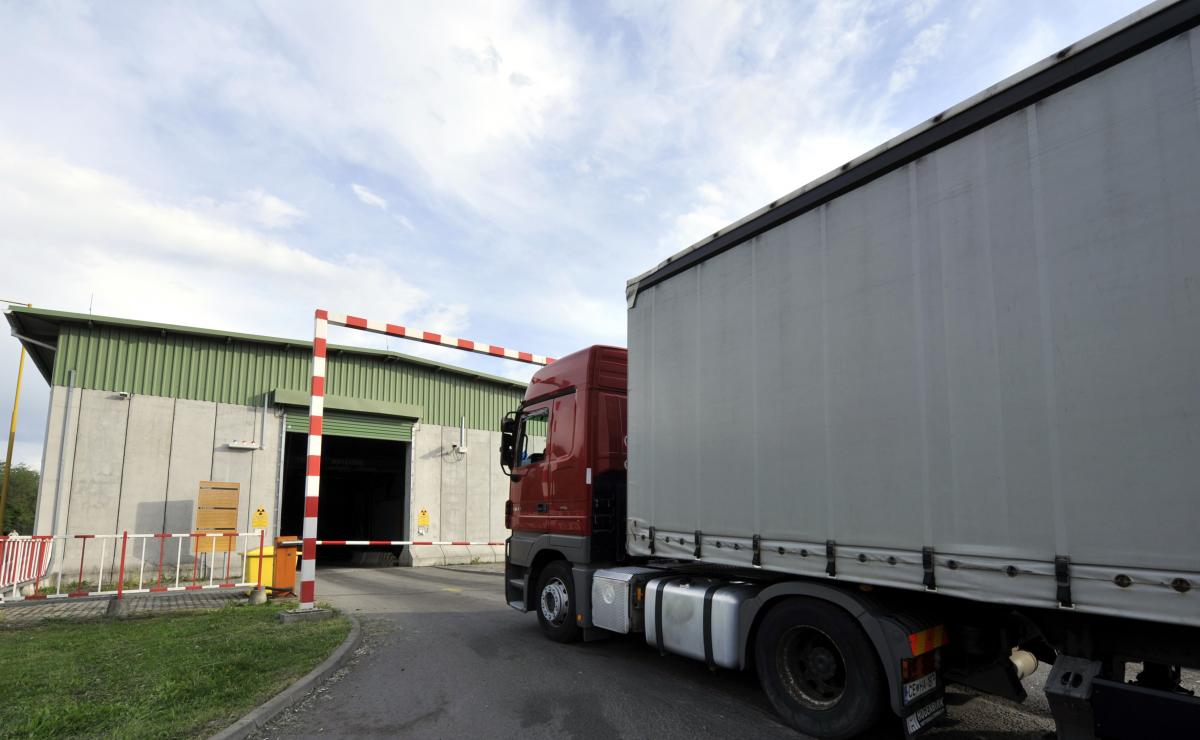
Scanning a cargo truck at the Slovak– Ukrainian border crossing in Výšné Nemecké. Last year the Slovak customs authority confiscated more than 4.5 million illegal cigarettes that had made it past its Ukrainian counterpart. Impounded goods included Jin Ling cigarettes; despite its Chinese name, the brand is produced in Kaliningrad, Russia exclusively for illegal export and sales. (Photo: Archive of Border Police)
The smugglers’ efforts are not limited to operations above ground, however, and one of their greatest technical triumphs to date took place deep underground some 20 km (12 mi) to the northeast where they built a tunnel 1 m (3 ft) in diameter that stretched 700 m (2,290 ft) from the basement of a house in Uzhhorod, Ukraine to an industrial building near Výšné Nemecké, Slovakia. A 16-car train capable of transporting anything from cartons of cigarettes to illegal immigrants travelled 6 m (20 ft) below the surface through this modern, professionally constructed tunnel complete with reinforced walls and electrical power. When Slovak and Ukrainian customs officials carried out simultaneous raids at both ends of the tunnel, the Slovak force found 13,100 cartons of cigarettes representing €350,000 (US$397,000) in evaded taxes alone. The Ukrainian force found… …nothing. Knowing, however, that the tunnel had to lead to the Uzhhorod house, they continued their search until they finally uncovered the switch that rolled back the false wall that masked the entrance.
The short mountainous stretch of the 100-kilometre Slovak–Ukranian border is ideal for testing new surveillance methods. The border patrol uses not only conventional monitoring systems, but also technologies developed to protect oil pipelines or ground-penetrating radar originally meant for Mars exploration.
Police officials estimate that the tunnel operated undetected for at least a year, costing the EU as much as €50 million (US$57 million) in unpaid import taxes. Small wonder then, that the budget allocated to patrolling this tiny strip of land has room for state-of-the-art technology. When ordinary ground-penetrating radar (GPR) systems proved to be ineffective at penetrating the moist, clayey loess that makes up much of the region’s soil, the search for technology that would detect underground intrusion led farther afield: to Mars. The GPR systems developed in the 1990s for the Mars rovers, which have a range of up to 200 m (656 ft), have been adapted for use along the border, where even in the unfavourable conditions of the Subcarpathian soil, they can peer 50 m (164 ft) into the ground. The system has been so effective that the Slovak border patrol was invited to demonstrate the technology at the US–Mexico border near El Paso, Texas. In a test to see whether they could locate three tunnels already known to authorities, they actually located a fourth which hadn’t yet been discovered.
The battle between maintaining the integrity of the border and breaching it is far from over, and who will win, and how, is impossible to predict. All that can be said with certainty is that as long as there are political, financial, cultural or personal reasons to make the attempt, people on both sides will continue to find innovative ways to use whatever means are available to reach their goals.

